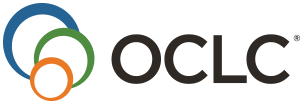Aspirational elements in an Institution of higher education in the Colombia-Venezuela ́s Border
DOI:
https://doi.org/10.22335/rlct.v4i2.473Keywords:
mission, vision, purpose, education, universityAbstract
This article presents the methodological framework and analysis of aspirational elements of the university Francisco de Paula Santander. From qualitative and quantitative analysis, from the application of instruments such as interviews, Delphi method, benefits matrix defines the mission, vision, institutional purpose for the period 2011-2019.
Downloads
References
Aguirre, S. C. (2010). The normativity of nature in aristotle and st. thomas. physis and natural just in classical philosophy. Pensamiento, 66(248), 245-260
Educación, U. D. (1994, octubre). http://www.unesco.org. Obtenido de http://www.unesco.org/cpp/sp/declaraciones/educacion.
Naciones Unidas, o. d. (2006). Plan de acción programa mundial para la educación en derechos humanos primera etapa. New York Y Ginebra: Unesco
Ohchr, O. d. (1997). Oficina del Alto Comisionado de Naciones Unidas para los Derechos Humanos – Ohchr. Obtenido de Directrices para la elaboración de planes nacionales de acción para la educación en la esfera de los derechos humanos. https://documentsddsny.un.org/doc/UNDOC/GEN/N97/284/14/PDF/N9728414.pdf?OpenElement.
R, J. X. (2002). Educación y derechos humanos. Estrategias didácticas y organizativas. Madrid: Popular.
Unesco. (1974). Recomendación sobre la Educación para la Comprensión, la Cooperación y la Paz Internacionales y la Educación relativa a los Derechos Humanos y las Libertades Fundamentales. Obtenido de http://portal.unesco.org/es/ev.phpURL_ID=13088&URL_DO=DO_TOPIC&URL_SECTION=201.html.
Universidad Francisco de Paula Santander (2010). Plan de Desarrollo. Cúcuta: UFPS
Universidad Francisco de Paula Santander (2011). Plan de Desarrollo 2011-2019. Cúcuta: UFPS
Downloads
Published
Issue
Section
License
This journal provides free and immediate access to its content (https://creativecommons.org/licenses/by/4.0/legalcode#languages), under the principle that making research available to the public free of charge supports greater global knowledge exchange. This means that the authors transfer the Copyrights to the journal, so that the material can be copied and distributed by any means, as long as the authors’ recognition is maintained, and the articles are not commercially used or modified in any way.
































